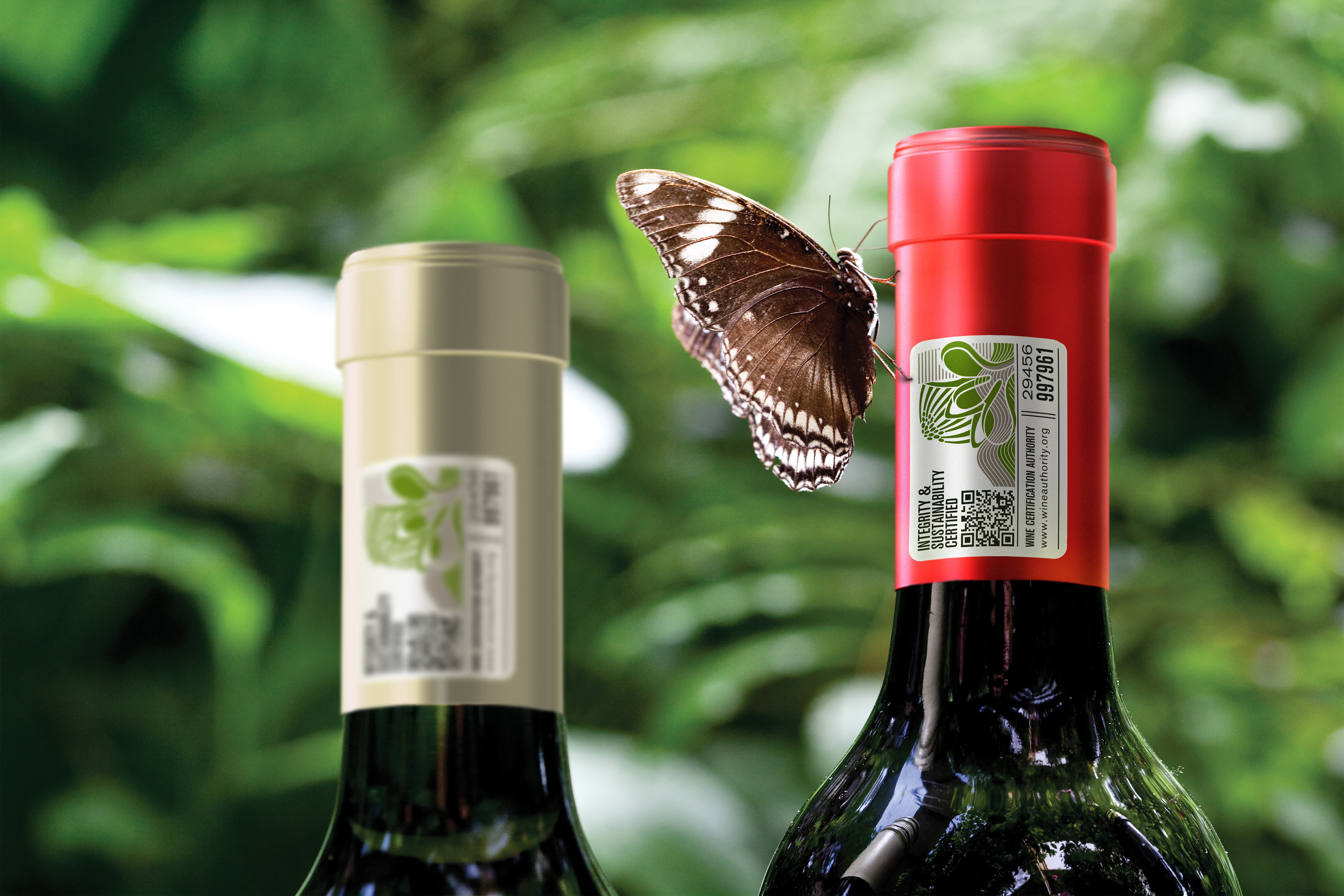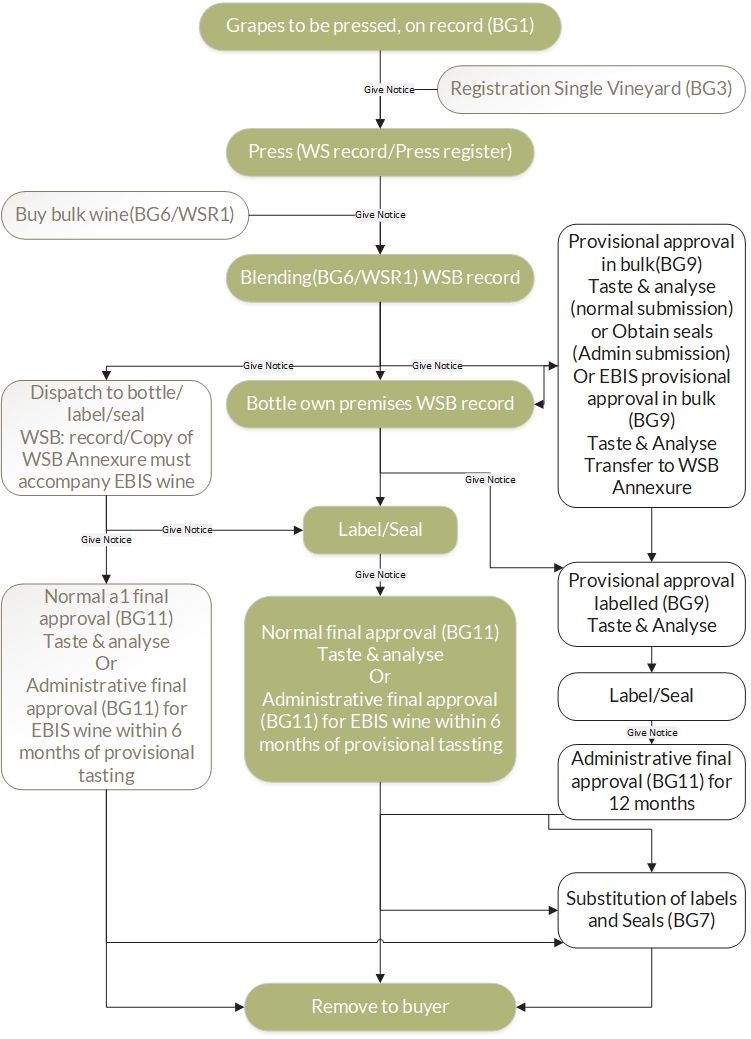Integrity
The integrity of our wine is guaranteed by the Wine Certification Authority (WCA), which is administered by the Wine and Spirit Board (WSB), a statutory board representative of the wine industry and appointed by the Minister of Agriculture, Forestry and Fisheries. The seal on the neck of the bottle (which is often called the bus ticket by South African winemakers) means it has been certified by the WSB, and it guarantees the trustworthiness of all information relating to origin, cultivar and vintage as stated on the label. The identification numbers on the seal are an indication of the strict control by the Wine and Spirit Board, from the pressing of the grapes to the certifying of the final product.
The certification system was introduced in 1973, when the wine industry was governed by a monopoly structure. This centralised control enabled a very efficient bureaucracy to ensure regulations were followed. The industry has been totally deregulated since 1994 but decided to keep the best of the old systems, and in particular those structures that ensure the integrity of the WCA.
To qualify for the certification of origin (of the grapes used for the wine), cultivar (the type of grapes used for the wine like Chardonnay, Cabernet Sauvignon etc) and vintage (the year of the harvest when the grapes were picked), it must contain at least 100%, 85% and 85% of the three claims respectively.
The hierarchy of classification is, in increasing order, a single vineyard wine, an estate, a ward, a district, a region and a geographical unit. Criteria like soil, climate, mountains and rivers are used for the demarcation of origin. An example of the different origin indications is ‘Oupa se Wingerd Muscadel’ which is made from a single vineyard (vineyard wine) on the Weltevrede Estate (estate wine) in Bonnievale (a ward) in the Robertson (district) of the Western Cape (a geographical unit).

 The certification process can be summarised as follows:
The certification process can be summarised as follows:
- Application for the pressing of the grapes intended for the making of the certified wine.
- Spot-check inspections during the harvest.
- Comprehensive bookkeeping of grapes received; wine produced, wine treatments and bottled stocks.
- Routine inspection of the records.
- Analytical and sensory evaluation. Panels of qualified wine tasters do the tasting of the wines to ensure that it is sound.
- Issue of the seal and labelling of the bottles. (The number(s) on the seal is unique for every bottle, making it possible to identify which grapes were used for the production of the wine.)
